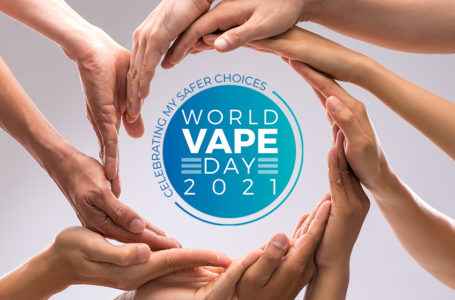Asia accounts for the majority of the world’s smokers and also for the most deaths related to the smoking epidemic which remains unabated. Asian smokers, bereft of options, are sprinting—into the abyss.
The region is home to 4.1 billion people, representing two-thirds of the global population, according to the United Nations estimates.
Of the total, four million people in Asia die every year of smoking-related illnesses, more than half of the estimated seven million annual casualties globally. The death toll from the Covid-19 pandemic pales in comparison.
As of April 26, the total global Covid-19 cases reached 147.8 million, while total deaths clocked 3.1 million and were still rising, the Worldodometer shows. Covid-19 is still early into its second year of fatal rampage.

So while we grapple with Covid-19 and its newer, deadlier strains, we should not hold our guard down against the older, more pernicious pandemic which had been largely beaten in other countries whose governments embraced tobacco harm reduction initiatives, welcomed and introduced innovative smoking alternative products.
A fresh report notes that most of the 1.1 billion smokers live in Asia and the Far East.
“Including the range of regional combustible products as well as manufactured cigarettes, the A&FE region accounts for around 80 percent of combustible tobacco users worldwide,” it says.
The Global Burden of Disease study estimates that smoking accounted for 7.1 million deaths in 2017, with an additional 1.2 million deaths attributed to second-hand smoking.
Latest available data also indicate that more than four million people in the region die of smoking-related diseases, with three-quarters of them in China and India.
To be sure, such alarming data do not bode well for the viability and sustainability of the region’s labor force, manufacturing base and industrial sector, the main engine of regional growth. Imagine losing 4 million people who are still productive each year.
The alarming trend simply needs to be stopped and rolled back. Fortunately, the technology and the tools are already available to reverse the trend.
The only things lacking are the consensus, the collective political will of national leaders to embrace the science and the technology behind tobacco harm reduction, and the products which have been greenlighted by governments of western countries.
Quite sadly and outrageously, some Asian authorities and global health bodies are dragging their feet in giving THR products and processes a try.
By doing so, they are blocking the exit points for people wanting out of the smoking lifestyle that had been debilitating them far longer than Covid-19.
Thus, consumer advocates and THR experts called on the World Health Organization and governments in A&FA to:
- stop lying and provide guidance solely based on sound scientific facts, methodologies, and principles;
- regulate based on sound scientific facts that include stakeholder (consumer) participation as part of the decision-making process;
- uphold, promote, and defend the basic human right to harm reduction that is one of the WHO’s founding principles: “To serve public health at all times — to put people’s health interests first”;
- stop interfering with the rights of adults to make informed choices regarding their health and wellbeing; and,
- end discrimination against users of safer nicotine products because they aren’t doing what you want them to do.
The THR advocates presented their demands following the latest report that more than half of global smoking-related deaths occur in the region.
This is the main finding of the latest Global State of Tobacco Harm Reduction made public by health agency Knowledge Action Change and the Association of Vapers India (AVI).
Published by KAC and edited by Harry Shapiro, the regional report Tobacco Harm Reduction: A Burning Issue for Asia and the Far East noted that “over half of the world’s smokers who die every year, die in Asia and the Far East”.
It said that four million people in the region die prematurely as a result of smoking, representing over half of all global smoking-related deaths, despite the tobacco-control strategies dictated by the WHO and well-funded organizations such as Bloomberg Philanthropies.
The report said there is little evidence that such tobacco-control strategies are working because most smokers in the region have low desire to quit.

It noted that vaping and HTPs emit substantially fewer toxins than conventional combustible tobacco products, which means the potential health risks from smoking are dramatically reduced by switching away from cigarettes.
It said that while these safer nicotine products can help smokers switch away from far more dangerous products, “an invidious combination of political expediency, linked to the pervasive nature of state-owned or state-involved tobacco companies and pressure on politicians and officials from Western-funded anti-tobacco harm reduction NGOs, promoting bad science and propaganda, is resulting in increasingly harsh legislative responses”.
Reacting to the report during the launch, Nancy Loucas, CAPHRA executive coordinator, said public health officials in the region have unfortunately waged a war on safer nicotine products and the concept of THR.
“The biggest challenges facing tobacco harm reduction in Asia are not only government interest in tobacco manufacturing which is pretty huge in the region but also the reach of philanthropic colonialism. That is, foreigners coming to countries and using private foundations or NGOs which they fund to help guide governments in developing policies,” said Loucas.
“These people do not want safer nicotine products that are available. They do not want the concept of tobacco harm reduction to be promoted or to be celebrated. This is because they serve their own personal economic agenda,” she said.
Samsul Kamal Arrifin, president of Malaysian Organization of Vape Entity (MOVE), expressed hope that health authorities would eventually recognize THR as a life-saving strategy.
“Our hope for tobacco-harm reduction is that we can put in place consumer-friendly regulations for production, distribution, and the use of THR products and for the authorities to see this as a life-saving initiative,” he said.
In the critically acclaimed, award-winning film Darkest Hour, Gary Oldman, in the role of wartime British Prime Minister Winston Churchill, said: “It is a wicked thing to take away man’s hope.”
Indeed, we should keep that hope burning for people groping their way out of the dark, smoke-filled, toxin-tainted world.




















1 Comment
[…] A practical solution to the Asian smoking scourge […]